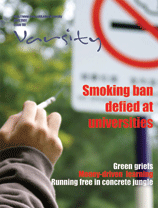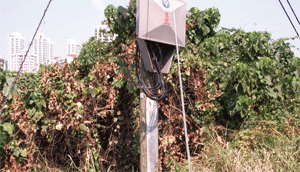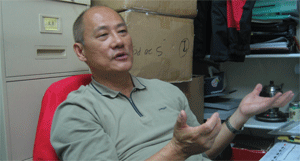


Periscope
'Green cancer' stays rampant
Now the clearance of Mikania found in private lands can only depend on the landowners themselves, as the government does not have the right to intrude private properties and tackle the weed problem there.
Lawmaker Albert Chan Wai-yip said: "The government has curbed proliferation of the weed in public areas like the country parks, but the situation is actually exacerbating in the private properties which are out of the jurisdiction of the government."
Mr Chan said Mikania could easily be seen in private
farmlands and rural roadsides, such as various places in Lantau
Island and along Tai Po Road leading to Fanling.
Green activists blame government departments for taking
the clearance only as a task and failing to bother about the
growth of Mikania in places out of their jurisdictions.
The government shares the Mikania clearance work among several departments. For instance, the Agriculture, Fisheries and Conservation Department (AFCD) takes charge of clearing Mikania in the country parks and the Highways Department is responsible for the roadside plants.
Hong Kong is also lagged behind countries like Singapore and Australia that take the weed problem very seriously. The governments of those places require mandatory reporting and clearing of Mikania once it is identified.
The Hong Kong government, meanwhile, said it had no latest statistics on the extent of land affected by Mikania. But its AFCD cleared 76 hectares of land covered with the weed, as large as about 76 football fields, between 2003 and 2006.
Choi Lim-cho, senior leisure manager (horticulture) of the Leisure and Cultural Services Department said that the AFCD had published technical guidelines for other government departments and private landowners on the identification and proper clearance of Mikania. The government has also cooperated with experts in Guangdong to find ways to clear for sites near water sources or agricultural lands for fear of contamination.
Chau Kwai-cheong, a geography and resource management professor at the Chinese University of Hong Kong, said the Mikania problem should be faced squarely, pinpointing the potential threats of the weed on the well-being of humans.
He said as Mikania killed other plants, biodiversity would be reduced and the gene pool would shrink, affecting the supply of some genetically engineered foodstuff. Mikania could also kill plants with high medical value and even lower property prices where it spoiled the scenes.
According to the experience of the Conservancy Association, continuous clean-up for at least three years can bring the weed under control.

Mikania crawls along fences near Sha Tin Wai Village.

Leaves of
Mikania are heart-shaped and often come in bunches.

Chan Wai-yip has
been active in raising questions about plant policies at the legislature.
